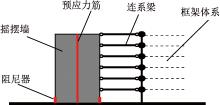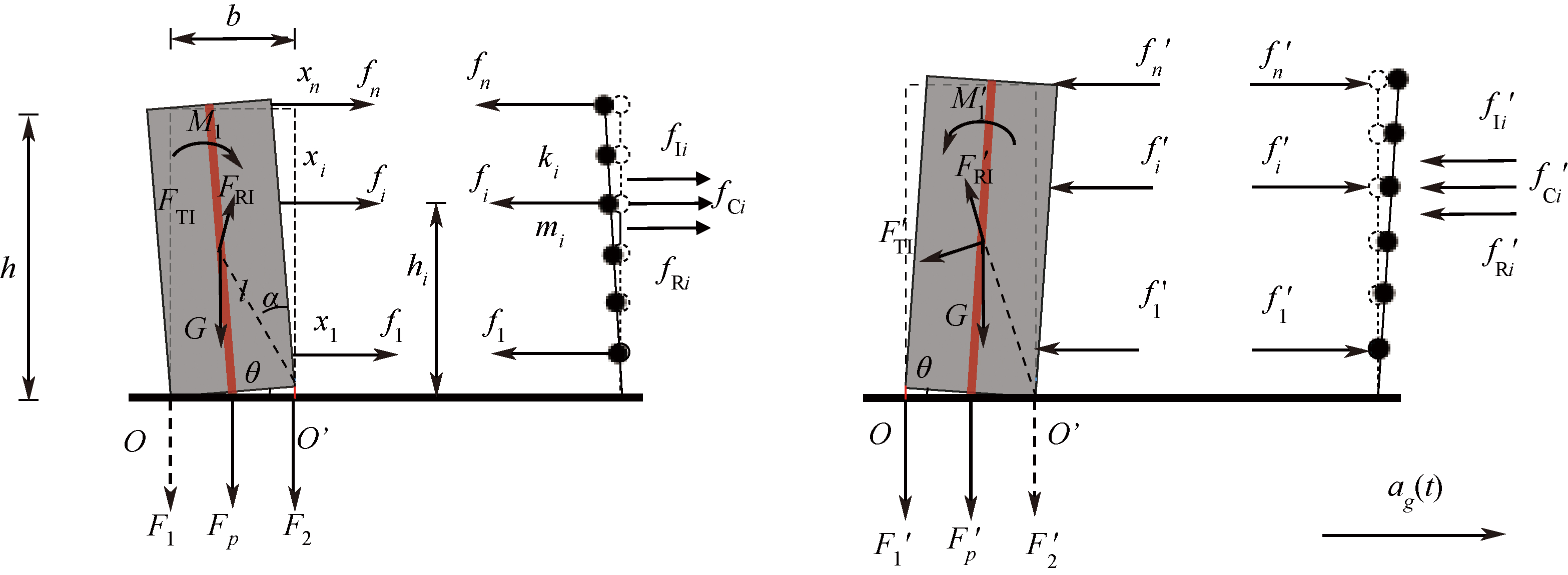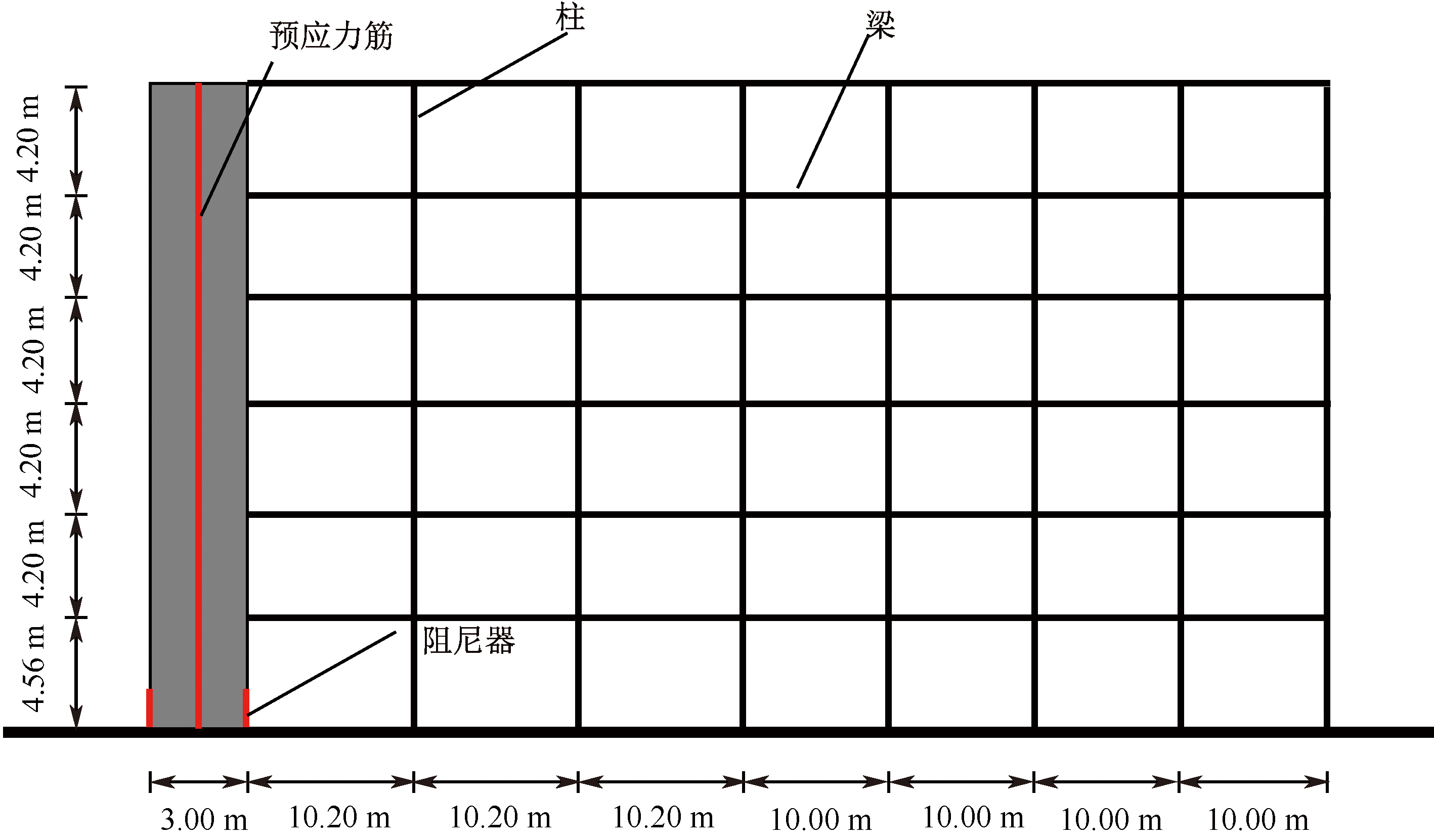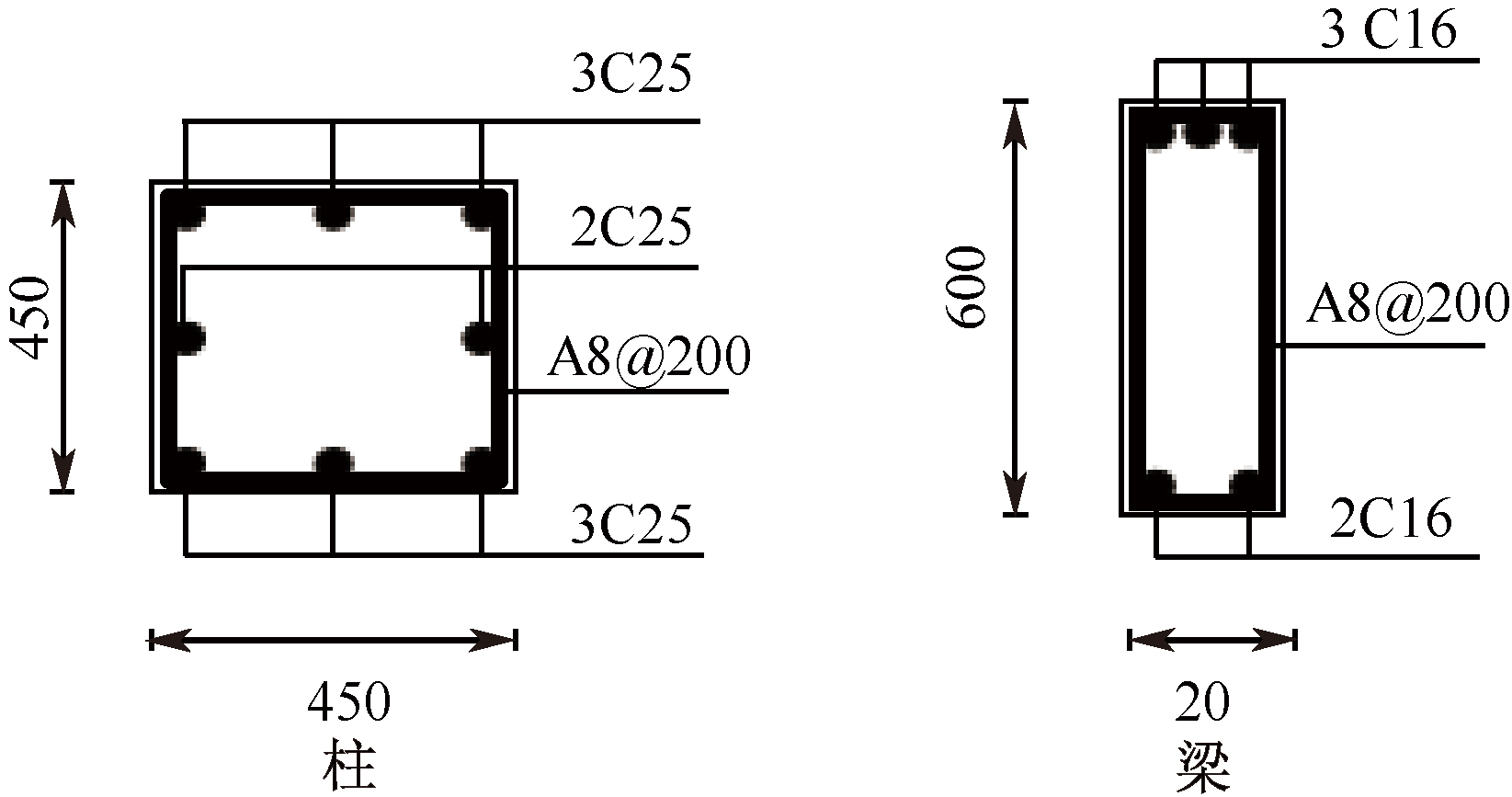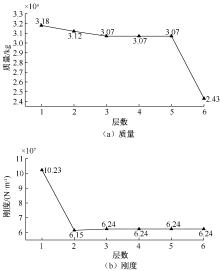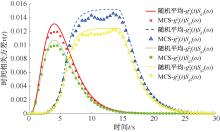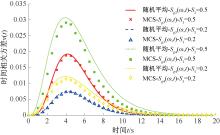| [1] |
HOUSNER G W. The behavior of inverted penduium structures during earthquakes[J]. Bulletin of the Seismoiogical Society of American, 1963, 53(2):403-417.
|
| [2] |
曹海韵, 潘鹏, 吴守君, 等. 框架-摇摆墙结构体系中连接节点试验研究[J]. 建筑结构学报, 2012, 33(12):38-46.
|
|
CAO Haiyun, PAN Peng, WU Shoujun, et al. Experimental study of connections of frame-rocking wall system[J]. Journal of Building Structures, 2012, 33(12):38-46.
|
| [3] |
白春, 王来贵, 刘书贤, 等. 煤矿采动对RC框架结构抗震性能影响试验研究[J]. 中国安全科学学报, 2021, 31(9):174-183.
doi: 10.16265/j.cnki.issn1003-3033.2021.09.024
|
|
BAI Chun, WANG Laigui, LIU Shuxian, et al. Experimental study on fluence of coal mining on seismic performance of RC frame structure[J]. China Safety Science Journal, 2021, 31(9):174-183.
doi: 10.16265/j.cnki.issn1003-3033.2021.09.024
|
| [4] |
EKKACHAI Y, PENNUNG W. Seismic performance of precast hybrid moment-resisting frame/rocking wall systems[J]. Magazine of Concrete Research, 2017, 70(21):1118-1134.
|
| [5] |
董金芝, 张富文, 李向民. 框架-预应力摇摆墙结构抗震性能试验研究[J]. 工程力学, 2019, 36(4):167-176.
|
|
DONG Jinzhi, ZHANG Fuwen, LI Xiangmin. Experimental study on the seismic performance of frame-prestressed rocking wall structures[J]. Engineering Mechanics, 2019, 36(4):167-176.
|
| [6] |
张富文, 李向民, 陈玲珠, 等. 一种框架摇摆墙结构的实现形式及其有限元分析[J]. 振动与冲击, 2016, 35(17):213-217.
|
|
ZHANG Fuwen, LI Xiangmin, CHEN Lingzhu, et al. Design and finite element analysis for a new frame-rocking wall structure[J]. Journal of Vibration and Shock, 2016, 35(17):213-217.
|
| [7] |
马哲昊, 张纪刚, 李芦钰, 等. 基于人工消能塑性铰的装配式RC框架-摇摆墙结构地震易损性分析[J]. 土木工程学报, 2022, 55(增1):65-74.
|
|
MA Zhehao, ZHANG Jigang, LI Luyu, et al. Seismic fragility analysis of prefabricated RC frame-rocking wall structure based on artificial dissipative plastic hinge[J]. China Civil Engineering Journal, 2022, 55(S1):65-74.
|
| [8] |
孙魁, 郭昌锋, 刘洪宇. 内嵌式框架摇摆墙结构抗震性能研究[J]. 中国安全科学学报, 2022, 32(增2):153-159.
|
|
SUN Kui, GUO Changfeng, LIU Hongyu. Research on seismic performance of embedded frame structure with infilled rocking wall[J]. China Safety Science Journal, 2022, 32(S2):153-159.
doi: 10.16265/j.cnki.issn1003-3033.2022.S2.0044
|
| [9] |
吴守君, 潘鹏. 摇摆填充墙-框架结构抗震性能研究[J]. 建筑结构学报, 2015, 36(10):81-87.
|
|
WU Shoujun, PAN Peng. Seismic performance evaluation of rocking infilled wall-frame structure[J]. Journal of Building Structures, 2015, 36(10):81-87.
|
| [10] |
李青倩, 陈跃, 盛涛. 变刚度框架-摇摆墙结构参数模型研究[J]. 自然灾害学报, 2021, 30(5):171-180.
|
|
LI Qingqian, CHEN Yue, SHENG Tao. Research on a parameter model of frame-rocking wall structures with variable stiffness[J]. Journal of Natural Disasters, 2021, 30(5):171-180.
|
| [11] |
刘汉赋, 陆晨, 胡晓斌. 框架-自复位墙结构弹性地震反应分析的简化方法[J]. 工程力学, 2022, 39(1):100-107, 117.
|
|
LIU Hanfu, LU Chen, HU Xiaobin. A simplified method for analyzing the elastic seismic response of framed self-centering wall structures[J]. Engineering Mechanics, 2022, 39(1):100-107, 117.
|
| [12] |
HU Huiying, CHEN Lincong. Stochastic response of SDOF self-centering system[J]. International Journal of Structural Stability and Dynamics, 2020, 20(5):DOI: 10.1142/S0219455420500625.
|
| [13] |
胡晓斌, 江卫波. 自复位单自由度体系随机地震响应分析[J]. 振动与冲击, 2016, 35(16):152-157.
|
|
HU Xiaobin, JIANG Weibo. A random seismic response analysis of self-centering SDOF systems[J]. Journal of Vibration and Shock, 2016, 35(16):152-157.
|
| [14] |
郭秀秀, 李长宇, 史庆轩. 基于改进Bouc-Wen模型的非线性结构非平稳随机地震响应分析[J]. 振动与冲击, 2020, 39(18):248-254,268.
|
|
GUO Xiuxiu, LI Changyu, SHI Qingxuan. Non-stationary stochastic seismic response analysis of a non-linear structure based on an improved Bouc-Wen model[J]. Journal of Vibration and Shock, 2020, 39(18):248-254, 268.
|
| [15] |
YOSHIDA H, SANADA Y, AWANO M. Feasibility study on evaluating required seismic capacity for safety limit design of high-rise RC buildings in OS1 and OS2 Regions and its estimation based on the equivalent linearization method[J]. Journal of Structural and Construction Engineering, 2021, 86(780):235-245.
|
| [16] |
HAN Renjie, FRANGKOULIS V C, KONG Fan, et al. Non-stationary response determination of nonlinear systems subjected to combined deterministic and evolutionary stochastic excitations[J]. International Journal of Non-Linear Mechanics, 2022, 147:DOI: 10.1016/j.ijnonlinmec.2022.104192.
|
| [17] |
胡慧瑛, 陈林聪. 随机地震激励作用下自复位结构的平稳响应[J]. 振动与冲击, 2021, 40(3):297-302.
|
|
HU Huiying, CHEN Lincong. Stationary response of self-centering structure under random earthquake excitation[J]. Journal of Vibration and Shock, 2021, 40(3):297-302.
|
| [18] |
SPANOS P D, KOUGIOUMTZOGLOU I A, DOS SANTOS K R M, et al. Stochastic averaging of nonlinear oscillators: hilbert transform perspective[J]. Journal of Engineering Mechanics(ASCE), 2018, 114(2):DOI: 10.1061/(ASCE)EM.1943-7889.0001410.
|
| [19] |
DOS SANTOS K R M, KOUGIOUMTZOGLOU I A, SPANOS P D. Hilbert transform-based stochastic averaging technique for determining the survival probability of nonlinear oscillators[J]. Journal of Engineering Mechanics(ASCE), 2019, 145(10): DOI: 10.1061/(ASCE)EM.1943-7889.0001651.
|
| [20] |
李鸿晶, 陈辰. 一种平稳地震地面运动的改进金井清谱模型[J]. 工程力学, 2014, 31(2):158-163.
|
|
LI Hongjing, CHEN Chen. A mondified kanai-tajimi spectral model for the stationary earthquake induced ground motion process[J]. Engineering Mechanics, 2014, 31(2):158-163.
|
| [21] |
欧进萍, 牛荻涛, 杜修力. 设计用随机地震动的模型及其参数确定[J]. 地震工程与工程振动, 1991, 11(3):45-54.
|
|
OU Jinping, NIU Ditao, DU Xiuli. Random earthquake ground motion model and its parameter determination used in aseismic design[J]. Earthquake Engineering and Engineering, 1991, 11(3):45-54.
|
| [22] |
李英民, 刘立平, 赖明. 工程地震动随机功率谱模型的分析与改进[J]. 工程力学, 2008, 25(3):43-48,57.
|
|
LI Yingmin, LIU Liping, LAI Ming. Analysis and improvement of power random spectra of strong ground motions for engineering purpose[J]. Engineering Mechanics, 2008, 25(3):43-48, 57.
|
| [23] |
彭凌云, 周锡元, 李小军. 对已有强震地面运动功率谱模型的改进[J]. 北京工业大学学报, 2011, 37(3):388-394.
|
|
PENG Lingyun, ZHOU Xiyuan, LI Xiaojun. Some improvements on exiting power spectral models of strong earthquake ground motion[J]. Journal of Beijing University of Technology, 2011, 37(3):388-394.
|
| [24] |
SMITH B J, MCGINNIS M J, KURAMA Y C. Design and measured behavior of a hybrid precast concrete wall specimen for seismic regions[J]. Journal of Structural Engineering, 2011, 137(10):1052-1062.
|
| [25] |
SMITH B J, KURAMA Y C, MCGINNIS M J. Behavior of precast concrete shear walls for seismic regions: comparison of hybrid and emulative specimens[J]. Journal of Structural Engineering, 2013, 139(11):1917-1927.
|
| [26] |
HUANG Feng, DAI Zebing, LU Jianguo, et al. Damping efficiency analysis of metal dampers for a high-voltage electrical arrester[J]. Arabian Journal for Science and Engineering, 2014, 39:6069-6081.
|
| [27] |
ZHANG Yuanjin, KOUGIOUMTZOGLOU I A, KONG Fan. A Wiener path integral technique for determining the stochastic response of nonlinear oscillators with fractional derivative elements: a constrained variational formulation with free boundaries[J]. Probabilistic Engineering Mechanics, 2023, 71: DOI: 10.1016/j.probengmech.2022.103410.
|
| [28] |
KOUGIOUMTZOGLOU I A, SPANOS P D. An approximate approach for nonlinear system response determination under evolutionary stochastic excitation[J]. Current Science, 2009, 97(8):1203-1211.
|
| [29] |
JANGID R S. Response of SDOF system to non-stationary earthquake excitation[J]. Earthquake Engineering and Structural Dynamics, 2004, 33 (15):1417-1428.
|
| [30] |
CLOUGH R W, PENZIEN J. Dynamics of structures[M]. New York: McGraw-Hill Book Co., 1975:307-310.
|
| [31] |
KONG Fan, HAN Renjie, ZHANG Yuanjin. Approximate stochastic response of hysteretic system with fractional element and subjected to combined stochastic and periodic excitation[J]. Nonlinear Dynam, 2022, 107 (1):375-390.
|
| [32] |
LIU Zhangjun, LIU Zixin, CHEN Denghong. Probability density evolution of a nonlinear concrete gravity dam subjected to nonstationary seismic ground motion[J]. Journal of Engineering Mechanics(ASCE), 2017, 144 (1):DOI : 10.1061/(ASCE)EM.1943-7889.0001388.
|


